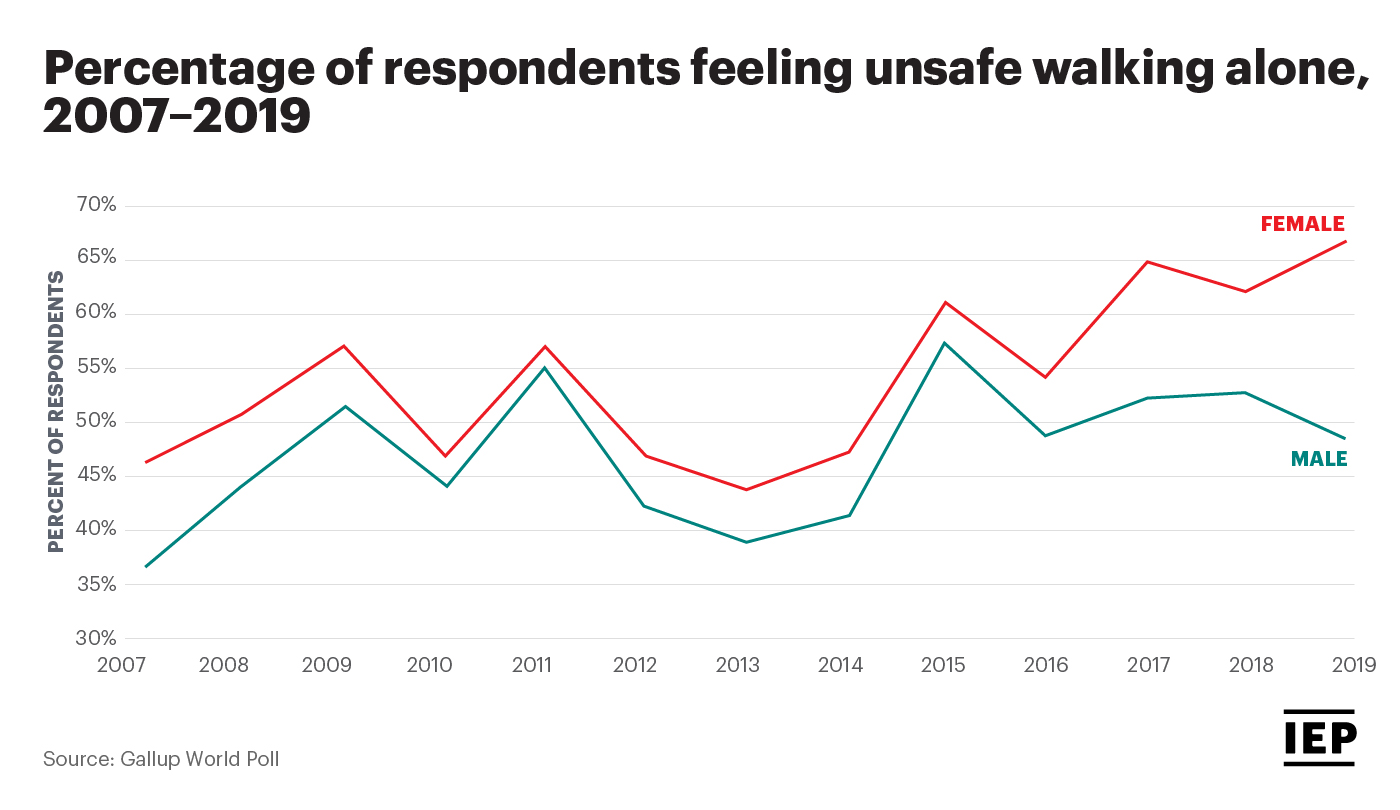Femicide: Understanding The Causes Behind The Recent Surge

Table of Contents
The Role of Gender Inequality and Societal Norms
Deep-rooted gender inequality fuels the tragic reality of femicide. Understanding the societal structures and norms that perpetuate this violence is crucial to combating it effectively.
Patriarchal Structures and Power Dynamics
Patriarchal systems, where men hold primary power and authority, normalize male dominance and female subordination. This creates an environment where violence against women is not only more likely but often excused or minimized.
- Examples of patriarchal norms: The expectation that women should be submissive, the prioritization of male opinions and decisions, the control of women's bodies and reproductive choices.
- Cultural practices that legitimize violence: "Honor killings," dowry-related violence, and other culturally sanctioned forms of violence against women.
- Statistical correlation: Studies consistently demonstrate a strong correlation between the prevalence of patriarchal societies and higher rates of femicide. The more entrenched patriarchal norms are, the greater the risk of women becoming victims of gender-based homicide.
Unequal power dynamics within families and communities contribute significantly to a climate of impunity for perpetrators. Women often lack the social and economic power to challenge abusive partners or family members, leaving them vulnerable to extreme violence.
Harmful Masculinities and the Normalization of Violence
Societal expectations of masculinity often promote aggression and violence, creating a breeding ground for femicide. The pressure on men to conform to ideals of strength, control, and dominance can lead to harmful behaviors, including violence against women.
- Examples of toxic masculinity: The belief that men should never show emotion, the use of violence to assert dominance, the normalization of aggression and sexual coercion.
- The link between violence and perceived loss of control: In many cases, femicide is driven by a perpetrator's feelings of anger, jealousy, or a perceived loss of control over a woman.
- The influence of media and popular culture: The portrayal of violence against women in media can normalize and even glorify such acts, contributing to a culture of acceptance.
The concept of "honor killings," where women are murdered by family members for perceived breaches of cultural norms, is a stark example of how cultural values can directly lead to femicide. These crimes highlight the devastating intersection of patriarchal structures and harmful cultural practices.
The Impact of Violence and Abuse
The progression from domestic violence to femicide is tragically common. Understanding the dynamics of abuse and escalation is critical for prevention and intervention.
The Cycle of Domestic Violence and Escalation
Domestic abuse often follows a cyclical pattern, with periods of tension, violence, and then a temporary period of reconciliation. However, this cycle frequently escalates, culminating in femicide. A significant percentage of femicide victims are killed by intimate partners.
- Statistics on intimate partner violence leading to femicide: Data consistently shows a strong correlation between experiencing domestic violence and being killed by a partner.
- The stages of abuse: The cycle typically includes verbal abuse, physical violence, threats, and emotional manipulation. Each stage can escalate, ultimately leading to deadly consequences.
- Warning signs: Recognizing warning signs of escalating violence is crucial for preventing femicide. These can include increased threats, controlling behavior, increased isolation of the victim, and escalating physical violence.
Access to resources, support systems, and legal protection plays a crucial role in preventing the escalation of domestic violence to femicide. Providing victims with safe havens, legal aid, and counseling services can dramatically improve their chances of survival.
Stalking, Harassment, and Online Abuse
Stalking, harassment, and online abuse are often overlooked precursors to femicide. These behaviors can escalate into lethal violence, and they frequently go unreported or unaddressed.
- Statistics on the correlation between stalking/harassment and femicide: Studies show a significant link between stalking and harassment and the subsequent murder of women.
- Examples of online abuse that can contribute to violence: Cyberstalking, online harassment, threats of violence, and the sharing of intimate images without consent.
- Legal frameworks to address this issue: Robust laws against stalking and harassment are necessary, along with effective mechanisms for enforcement and support for victims.
Recognizing these behaviors as warning signs is crucial. Effective intervention strategies, including restraining orders, technological solutions, and increased police responsiveness, are essential to preventing escalation.
Lack of Legal Protection and Impunity
Inadequate legal frameworks and weak enforcement contribute significantly to the problem of femicide. Impunity for perpetrators is a devastating consequence.
Weak Enforcement of Laws and Inadequate Legal Frameworks
Under-reporting, ineffective law enforcement, and lenient sentencing contribute to a climate of impunity for perpetrators of femicide. Many countries lack the necessary legal frameworks and resources to adequately address this complex crime.
- Examples of weak legal systems: A lack of specific laws against femicide, weak enforcement of existing laws, and a lack of specialized training for law enforcement officials.
- Lack of specialized units to address gender-based violence: Many police forces lack dedicated units to investigate and prosecute gender-based violence, hindering effective investigation and prosecution of femicide cases.
- Difficulties in prosecuting femicide cases: Prosecutors often face challenges in gathering evidence, securing convictions, and obtaining adequate sentences.
Strong legislation, specialized training for law enforcement, and effective prosecution strategies are critical to holding perpetrators accountable and preventing future violence. International cooperation and the sharing of best practices are also crucial.
Access to Justice and Support Services
Women often face significant challenges in accessing legal aid, shelters, and other support services. These barriers further exacerbate their vulnerability.
- Statistics on access to legal aid and shelters: Data consistently demonstrates limited access to legal aid and adequate shelter spaces for women facing domestic violence.
- The importance of culturally sensitive services: Support services must be culturally appropriate and sensitive to the specific needs and circumstances of women from diverse backgrounds.
- Barriers to accessing support: Financial constraints, geographical limitations, language barriers, and fear of retaliation are among the challenges women face in seeking help.
Increased funding, improved access, and culturally appropriate support services are essential to ensuring that women can seek help and protection when they need it most.
Prevention and Intervention Strategies
Effective prevention and intervention strategies are essential for tackling the root causes of femicide and protecting women from violence.
Education and Awareness Campaigns
Educating communities about gender equality, healthy relationships, and the dangers of gender-based violence is paramount. Challenging harmful social norms is key to preventing future acts of femicide.
- Examples of successful campaigns: Public awareness campaigns highlighting the issue, educational programs in schools and community centers, and community-based initiatives.
- The role of schools and community organizations: Schools and community organizations play a crucial role in educating young people about healthy relationships, consent, and gender equality.
- The importance of challenging harmful norms: Open discussions and challenges to harmful gender norms are essential to creating a culture that respects women and rejects violence.
Public awareness campaigns can raise awareness of the issue, challenge harmful attitudes and beliefs, and promote positive behavioral change.
Strengthening Legal Frameworks and Enforcement
Comprehensive laws that protect women from violence and ensure effective prosecution of perpetrators are necessary. Strong judicial systems are crucial for holding offenders accountable.
- Examples of effective legislation: Laws that specifically address femicide, strengthen protections for victims, and provide for adequate sentencing of offenders.
- The role of international human rights law: International human rights instruments provide a framework for combating violence against women and holding states accountable.
- The importance of strong judicial systems: Effective judicial systems are essential for ensuring that perpetrators are prosecuted and punished appropriately.
International cooperation and the sharing of best practices are crucial to strengthening legal frameworks and promoting effective enforcement across borders.
Conclusion
Femicide is a complex issue rooted in deeply ingrained societal structures and norms. Addressing this global crisis requires a multi-pronged approach focusing on challenging patriarchal systems, tackling violence and abuse, strengthening legal frameworks, and implementing effective prevention and intervention strategies. By understanding the causes behind the recent surge in femicide, we can collectively work towards creating safer communities for women and girls everywhere. Let's unite in the fight against femicide and build a future free from gender-based violence. Learn more about how you can help prevent femicide and support survivors. Join the movement to end femicide.

Featured Posts
-
 Ai Powered Podcast Creation Digesting Repetitive Scatological Documents For Engaging Content
May 21, 2025
Ai Powered Podcast Creation Digesting Repetitive Scatological Documents For Engaging Content
May 21, 2025 -
 Barry Ward A Candid Interview On His Career And Cop Roles
May 21, 2025
Barry Ward A Candid Interview On His Career And Cop Roles
May 21, 2025 -
 The Goldbergs Exploring The Humor And Heart Of 1980s Family Life
May 21, 2025
The Goldbergs Exploring The Humor And Heart Of 1980s Family Life
May 21, 2025 -
 The Goldbergs A Nostalgic Journey Through 1980s Family Life
May 21, 2025
The Goldbergs A Nostalgic Journey Through 1980s Family Life
May 21, 2025 -
 Abn Amros Bonus System Under Scrutiny By Dutch Regulator
May 21, 2025
Abn Amros Bonus System Under Scrutiny By Dutch Regulator
May 21, 2025
Latest Posts
-
 Benjamin Kaellman Kehittynyt Pelaaja Valmis Huuhkajiin
May 21, 2025
Benjamin Kaellman Kehittynyt Pelaaja Valmis Huuhkajiin
May 21, 2025 -
 Kaellmanin Nousu Kentaeltae Ja Sen Ulkopuolelta Huuhkajiin
May 21, 2025
Kaellmanin Nousu Kentaeltae Ja Sen Ulkopuolelta Huuhkajiin
May 21, 2025 -
 Benjamin Kaellman Huuhkajien Uusi Maaliruisku
May 21, 2025
Benjamin Kaellman Huuhkajien Uusi Maaliruisku
May 21, 2025 -
 Mainz Falls To Dortmund As Beier Bags A Brace
May 21, 2025
Mainz Falls To Dortmund As Beier Bags A Brace
May 21, 2025 -
 Borussia Dortmund Defeat Mainz Thanks To Beiers Brace
May 21, 2025
Borussia Dortmund Defeat Mainz Thanks To Beiers Brace
May 21, 2025
